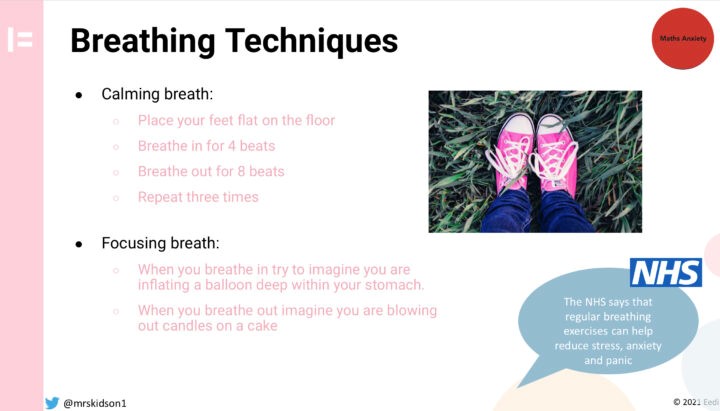Mathematics

Power Maths
- At Two Gates, we use Power Maths as a basis of our maths lessons. This is an exciting mastery approach, that works for every child.
- It has been recommended by the Department of Education, to ensure that the aims of the National Curriculum are achieved.
- At the heart of Power Maths is the belief that all children can achieve.
- It is built around hard work, practice and a willingness to see mistakes as learning opportunities.
The Power Maths teaching model:
- The curriculum is broken down into core concepts, taught in units e.g. addition and subtraction, multiplication and division, shape, statistics etc.
- Each unit is then divided into small learning steps – lessons
- Each lesson is sequenced in the same format:
Power Up – Discover – Share – Think Together – Practice – Reflect
POWER UP!
- We begin each maths lesson with a ‘Power Up’ activity designed to support fluency in all key number facts.
- Power Ups reinforce the two key things that are essential for success: times tables and number bonds.
- Power Ups are planned to enable spaced practice and retrieval of previously taught content.
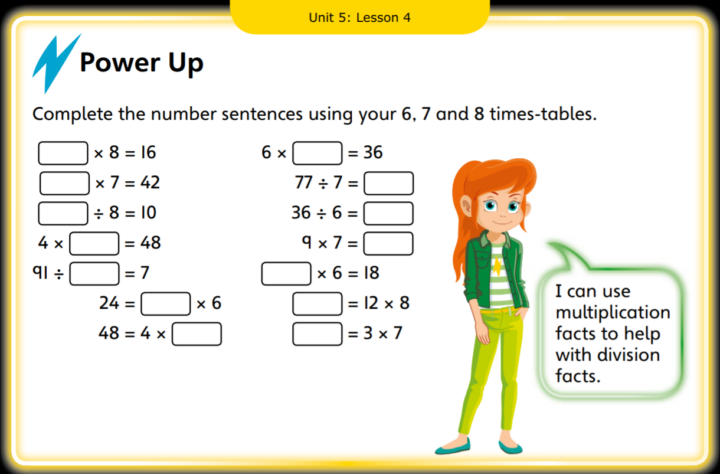
Discover
- The ‘Discover’ part of the lesson is the start of the core concept being taught in the lesson.
- It is a practical real-life problem that the children work in pairs to try to solve.
- It is encouraged that children use concrete objects during this part of the lesson and gives them time to play, explore and discuss possible strategies.
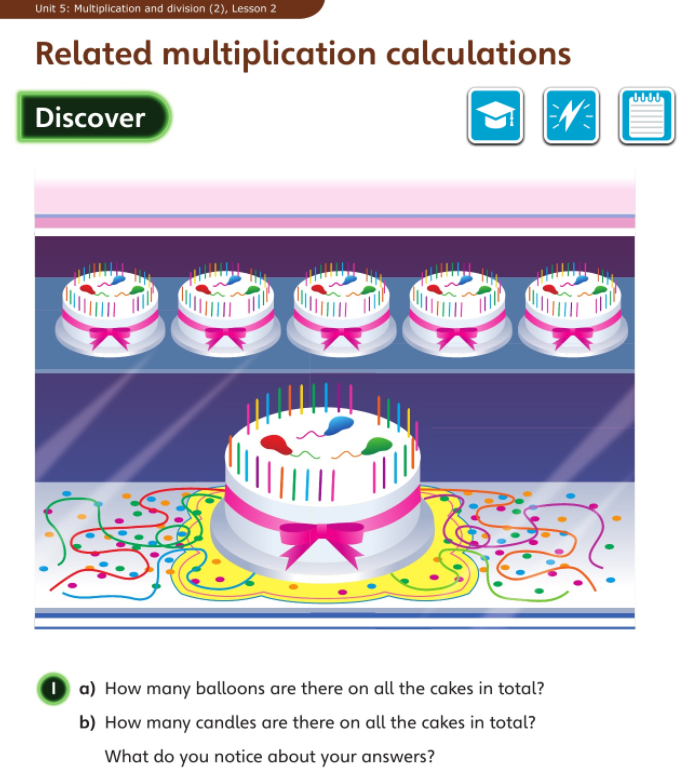
Share
- The ‘Share’ section allows the children to share and celebrate their solutions and strategies that they used to solve the problem from the ‘Discover’ section.
- The teacher will model how the concrete apparatus that the children used to explore the math concept, can then be explored using pictures.
- ‘Share’ is the “seeing” stage. It encourages the children to make a mental connection between the physical object they just handled and the abstract pictures, diagrams or models that represent the objects from the problem.
Think Together
- This section of the lesson allows children to explore new problems using the mathematical strategies they have learnt from the ‘Share’ section.
- The questions promote child independence and an ‘I can’ attitude by following an ‘I do, We do, You do approach’.
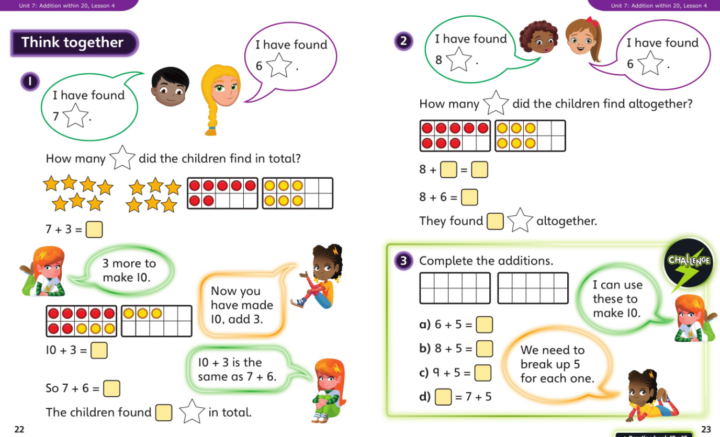
Practice
- The children have their own practice book and they work independently, following the same learning that has been explored through the ‘Discover’, ‘Share’, ‘Think Together’ sections.
- The questions in the practice book follow small steps of progression in order to deepen their learning.
- Teachers use ‘Live Marking’ to give children immediate feedback on their learning and address any misconceptions immediately.
Reflect
- This section allows the teacher the opportunity to check children’s understanding and how deeply the children have understood the maths concept being taught.
Talk (Oracy)
- Mathematical talk and the use of specific vocabulary is planned for at every stage of learning.
- Children use partner work to discuss ideas and use given vocabulary, ready to share with the class.
- Stem sentences are used for the children to build model answers upon and to support their mathematical understanding.
“There are ___ equal groups of ___.”
“The whole is ____. It has been divided into ___ equal parts .”
Mastering Number Reception, Y1 and Y2.
Mastering Number is a new programme offered in 2021/22 by the National Centre for Excellence in the Teaching of Mathematics (NCETM) and the Maths Hubs Network. It aims to develop solid number sense, including fluency and flexibility with number facts, which will have a lasting impact on future learning for all children.

Ways to help at home
1 minute maths app- https://whiterosemaths.com/resources/1-minute-maths This FREE app does not require a log in and has different levels of games which last for 1 minute, focussing on fluency and automatic recall. Your teacher will direct you to which games to play.
White Rose Maths Home Learning Lessons: https://whiterosemaths.com/homelearning?year=year-1
You can select your year group to watch FREE teacher led videos of maths concepts. The teaching in these videos is very closely matched to how we teach in school.
Times Tables Rockstars: https://ttrockstars.com/
How quickly can you answer the tables set?
Maths Bot: Online versions of our practical maths equipment
https://mathsbot.com/manipulatives/blocks (Base 10)
https://mathsbot.com/manipulatives/fractionWall (Fraction Wall)
https://mathsbot.com/manipulatives/rekenrek (Rekenrek KS1)
There are lots of examples on Maths Bot you could use at home. Just click the home icon to find more.
What is teaching for mastery?
- Mastering maths means pupils of all ages acquiring a deep, long-term, secure and adaptable understanding of the subject.
- The phrase ‘teaching for mastery’ describes the elements of classroom practice and school organisation that combine to give pupils the best chances of mastering maths.
- Achieving mastery means acquiring a solid enough understanding of the maths that’s been taught to enable pupils to move on to more advanced material .
(National Centre for Excellence in the Teaching of Mathematics).
Elements of Mastery classroom practise and school organisation are based on The 5 Big Ideas. These are built into the Power Maths programme.
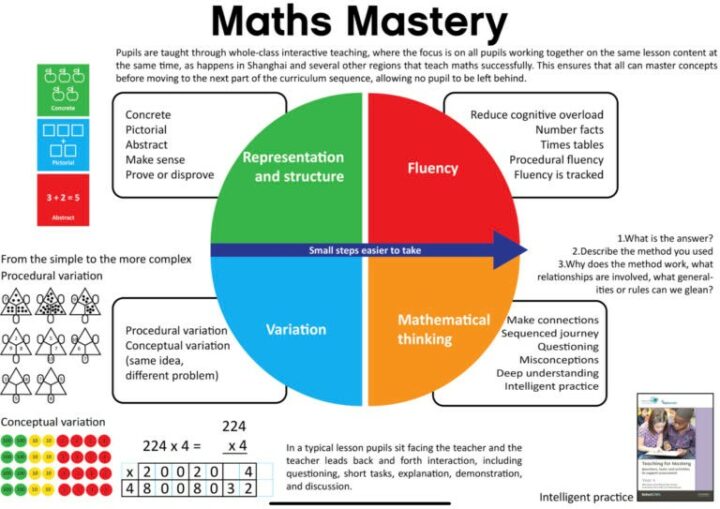
A great deal of research over many years has provided us with the knowledge of how best to teach maths. We are following research from the top performing countries across the world such as China and Singapore.
Teaching Maths for Mastery: Introduction from NCETM on Vimeo.
What is Teaching for Mastery by Debbie Morgan, Director of Primary Mathematics NCETM
Maths Anxiety
- Research says that maths anxiety compromises the functioning of working memory (Ashcroft and Krause 2007).
- It has been proven that maths anxiety directly links to poor performance in the subject.
- It is different to test anxiety and general anxiety. Math anxiety is not hereditary; no one is born as a bad mathematician.
- Adults own perception and experiences of maths can influence children.
- Children pick up on how you talk about it, for example, responses towards homework ‘Oh Mummy is rubbish at maths’ or Maths just isn’t me’.
- Here are some ways you can change mindsets and support children:

At Two Gates, we support reducing maths anxiety by removing time pressures on learning where possible. Time is important, and quick recall is necessary. However, pace of learning and varying practise tasks are carefully designed to support children not to feel overwhelmed when on their learning journey.
In addition, we use tools such as manipulatives to reduce the demand on the working memory. At home, you can use items such as pasta, toy cars and Lego to support learning. Children can also use pictures and pictorial representations to unpick and understand the maths.
Other ways to reduce children’s anxiety include using breathing techniques and helping children express how they are feeling and learn to self-regulate their emotions:
